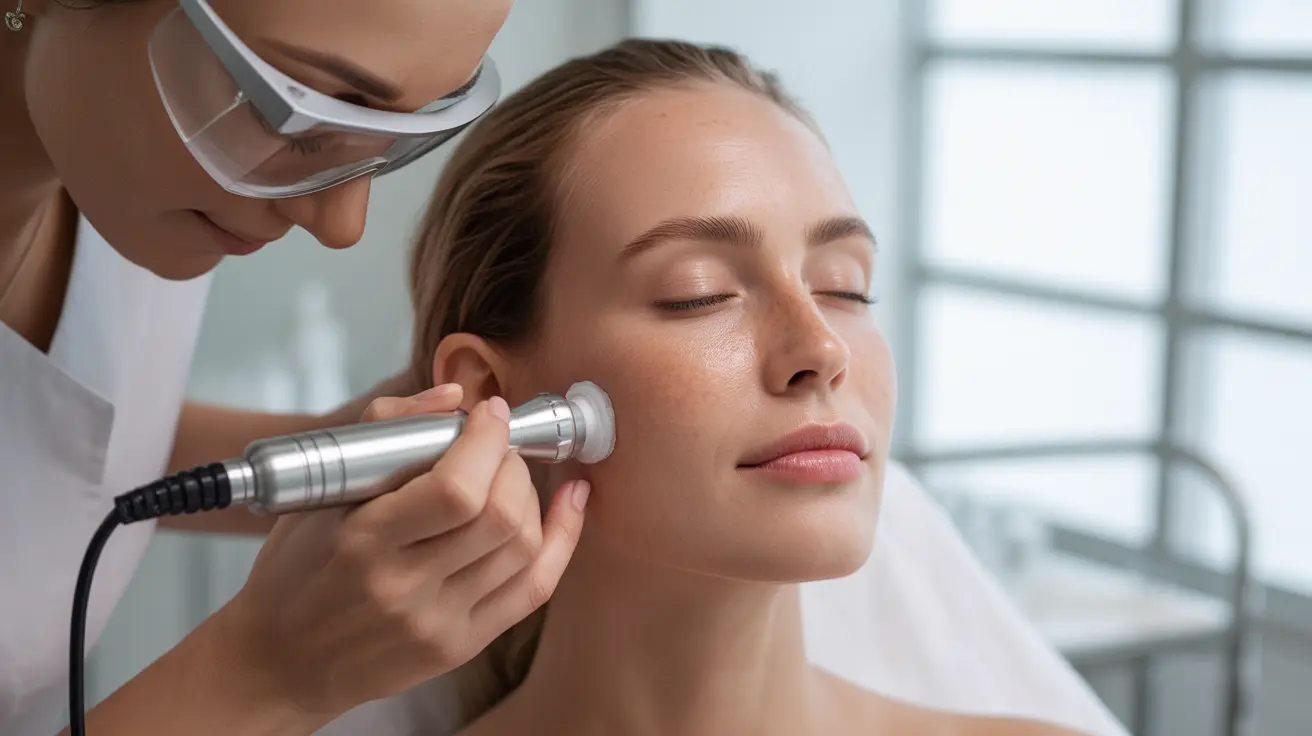If you're dealing with acne scars, microdermabrasion might be the solution you're looking for. This non-invasive cosmetic procedure has gained popularity for its ability to improve skin texture and reduce the appearance of certain types of acne scarring. Understanding how this treatment works and what to expect can help you decide if it's right for your skin concerns.
In this comprehensive guide, we'll explore everything you need to know about using microdermabrasion for acne scars, from its effectiveness on different scar types to recovery expectations and comparisons with other treatments.
Understanding Microdermabrasion and Its Effects on Acne Scars
Microdermabrasion is a mechanical exfoliation technique that uses tiny crystals or a diamond-tipped wand to remove dead skin cells and stimulate new cell growth. The procedure works by creating controlled micro-injuries to the skin's surface, which triggers the body's natural healing response and promotes collagen production.
Types of Acne Scars Suitable for Treatment
Not all acne scars respond equally to microdermabrasion. This treatment works best for:
- Superficial boxcar scars
- Rolling scars
- Post-inflammatory hyperpigmentation
- Surface texture irregularities
However, deep ice pick scars or keloid scars typically require more aggressive treatment approaches.
Treatment Process and Expected Results
During a microdermabrasion session, your skincare professional will use specialized equipment to exfoliate your skin while simultaneously applying vacuum suction. This dual action helps remove dead skin cells while stimulating blood flow and collagen production.
Number of Sessions Needed
Most people require multiple sessions to achieve optimal results with microdermabrasion. Typically, a series of 6-12 treatments, spaced 2-4 weeks apart, is recommended for acne scar improvement. Results are gradual and cumulative, with many patients noticing improvements after 3-4 sessions.
Safety Considerations and Skin Types
While microdermabrasion is generally considered safe, it's not suitable for everyone. The treatment works well for most skin types, but certain conditions may require careful consideration or alternative approaches.
Who Should Avoid Treatment
- People with active acne breakouts
- Those with sensitive or rosacea-prone skin
- Individuals with deep cystic acne
- Anyone with keloid scarring tendencies
- People taking certain acne medications
Recovery and Aftercare
Recovery from microdermabrasion is typically quick and straightforward. Most people experience minimal downtime, though some temporary side effects are common:
- Mild redness
- Slight skin sensitivity
- Temporary tightness
- Minor swelling
Proper aftercare is essential for optimal results and includes:
- Diligent sun protection
- Gentle skincare products
- Adequate hydration
- Avoiding harsh exfoliants for several days
Comparison with Other Acne Scar Treatments
Microdermabrasion offers several advantages over other treatments, though it may not be as effective for severe scarring. Here's how it compares:
Chemical Peels
Chemical peels can be more effective for deeper scars but typically require longer recovery time and may cause more side effects than microdermabrasion.
Laser Therapy
Laser treatments can target deeper scars more effectively but are generally more expensive and may require more downtime than microdermabrasion.
Frequently Asked Questions
What types of acne scars can microdermabrasion effectively improve? Microdermabrasion works best on superficial scars like mild boxcar scars, rolling scars, and post-inflammatory hyperpigmentation. It's less effective for deep, pitted scars or raised keloid scars.
How many microdermabrasion sessions are usually needed to see results on acne scars? Most patients require 6-12 sessions, spaced 2-4 weeks apart, to achieve optimal results. Visible improvements typically begin after 3-4 treatments.
Is microdermabrasion safe for all skin types, and who should avoid this treatment? While microdermabrasion is safe for most skin types, it's not recommended for people with active acne, sensitive skin, rosacea, or those taking certain acne medications. Consultation with a skincare professional is essential before starting treatment.
What is the expected recovery time and aftercare for microdermabrasion on acne scars? Recovery is minimal, typically lasting 24-48 hours. Proper aftercare includes sun protection, gentle skincare products, and avoiding harsh exfoliants for several days post-treatment.
How does microdermabrasion compare with other acne scar treatments like chemical peels or laser therapy? Microdermabrasion is generally gentler with less downtime than chemical peels or laser therapy, but may be less effective for deeper scars. It's often more affordable and requires less recovery time, making it a good option for mild to moderate scarring.




